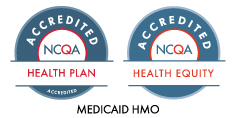COVID-19 Testing Site Information
Looking for up-to-date information on COVID-19 testing sites?
On our COVID-19: Information for Providers page, under Resources, there is a Testing section where you can access all current testing sites in the Alliance Service Area, by County.
New laws regarding Security Prescription Form requirements and CURES reporting
Law update #1: new Security Prescription Form requirements
Starting January 1, 2021, California state law (AB 149) requires 15 elements to appear on California Security Prescription Forms. (List of elements is included below.) State law also requires California Security Prescription Forms to be produced by printers licensed by the California Department of Justice’s California Security Prescription Printers Program.
Beginning January 1, 2021, the only California controlled substances prescription forms that will remain valid and acceptable by pharmacies will be those possessing a 12-character serial number and corresponding barcode compliant with the requirements introduced in AB 149, such as the example below:

Prescription forms for controlled substances must be printed with the following features:
- A latent, repetitive “void” pattern across the entire front of the prescription blank; if a prescription is scanned or photocopied, the word “void” shall appear in a pattern across the entire front of the prescription.
- A watermark on the backside of the prescription blank; the watermark shall consist of the words “California Security Prescription.”
- A chemical void protection that prevents alteration by chemical washing.
- A feature printed in thermochromic ink.
- An area of opaque writing so that the writing disappears if the prescription is lightened.
- A description of the security features included on each prescription form.
- (A) Six quantity check off boxes on the form so that the prescriber may indicate the quantity by checking the applicable box where the following quantities shall appear:
- 1-24
- 25-49
- 50-74
- 75-100
- 101-150
- 151 and over
(B) In conjunction with the quantity boxes, a space shall be provided to designate the units referenced in the quantity boxes when the drug is not in tablet or capsule form.
- Prescription blanks shall contain a statement printed on the bottom of the prescription blank that the “Prescription is void if the number of drugs prescribed is not noted.”
- The preprinted name, category of licensure, license number, federal controlled substance registration number, and address of the prescribing practitioner.
- Check boxes on the form so that the prescriber may indicate the number of refills ordered.
- The date of origin of the prescription.
- A check box indicating the prescriber’s order not to substitute.
- An identifying number assigned to the approved security printer by the Department of Justice.
- A check box by the name of each prescriber when a prescription form lists multiple prescribers.
- A uniquely serialized number.
FOR MORE DETAILS: The Board of Pharmacy, the Medical Board of California and the California Department of Justice developed an informational document and FAQs regarding the new security prescription form requirements of AB 149.
Law update #2: revised reporting requirements for controlled substances
Beginning January 1, 2021, the dispensing of a controlled substance must be reported to the Controlled Substance Utilization Review and Evaluation System (CURES) within one working day after the medication is released to the patient or the patient’s representative. Previously, the deadline to report was seven days after dispensing.
Further, this law requires reporting the dispensing of Schedule V drugs, in addition to Schedules II, III, and IV. This requirement applies to pharmacists and prescribers who dispense controlled substances.
The revised reporting requirements for controlled substances are specified in AB 528 (Low, Chapter 677, Statutes of 2019).
Maximizing Routine Immunization During the COVID-19 Pandemic

The COVID-19 pandemic has impeded the delivery of routine care, including immunizations. Across California, routine childhood immunizations have decreased significantly since the pandemic began.
Routine vaccinations prevent illnesses that lead to unnecessary medical visits, hospitalizations and further strain on the health care system. Health care professionals and families need to work together in this new environment to ensure children get caught up or stay on track with vaccines.
Here are some steps to take to reinforce the importance of maintaining routine immunizations during the pandemic and to protect patients’ health:
For office staff:
- Use immunization registry and electronic health record reminder and recall features to identify and contact patients who are overdue for influenza vaccination.
- Identify and contact families whose children have missed vaccine doses or who are due for influenza vaccination. Add children to this list who will be due for a second influenza vaccination dose.
- Create drive-up and drive-through clinic opportunities for persons needing walk-in vaccine services for influenza and other routine immunizations.
- Let families know what precautions are in place for safe delivery of in-person services.
- Escalate families that are concerned or refusing vaccines to have a nurse or other clinician contact the family to discuss their concerns.
- Pregnant patients should be scheduled for follow-up and receive vaccination during the next in-person appointment.
For health care providers:
- Review every patient’s immunization history at every health care visit to assess for needed vaccines. This includes both routine check-ups and acute-care visits.
- Vaccinations should not be postponed if records are not available. However, attempt to locate missing records.
- Establish Immunization Standing Orders for staff to use to ensure consistent services to every patient.
- Always screen patients for contraindications and precautions before a vaccine is administered, even if the same vaccine was previously administered.
- Make a strong recommendation for influenza immunization – your strong recommendation is a critical factor that affects whether your patients get an influenza vaccine.
- When patients are seen for any in-person visit, ensure that they receive all due or overdue vaccines, including seasonal influenza vaccine.
For the Care Team:
- Know your clinic’s immunization rates. Look at your rates on a monthly basis!
- Use the Alliance’s Portal Reports to calculate immunization rates.
- Script your vaccine messages for all office staff to reference.
- Get training on the Portal and your local Immunization Registry to optimize your tracking system. Reach out to your Provider Relations Representative at 800-700-3874, ext. 5504 (Monday – Friday, 8 a.m. to 5 p.m.)



